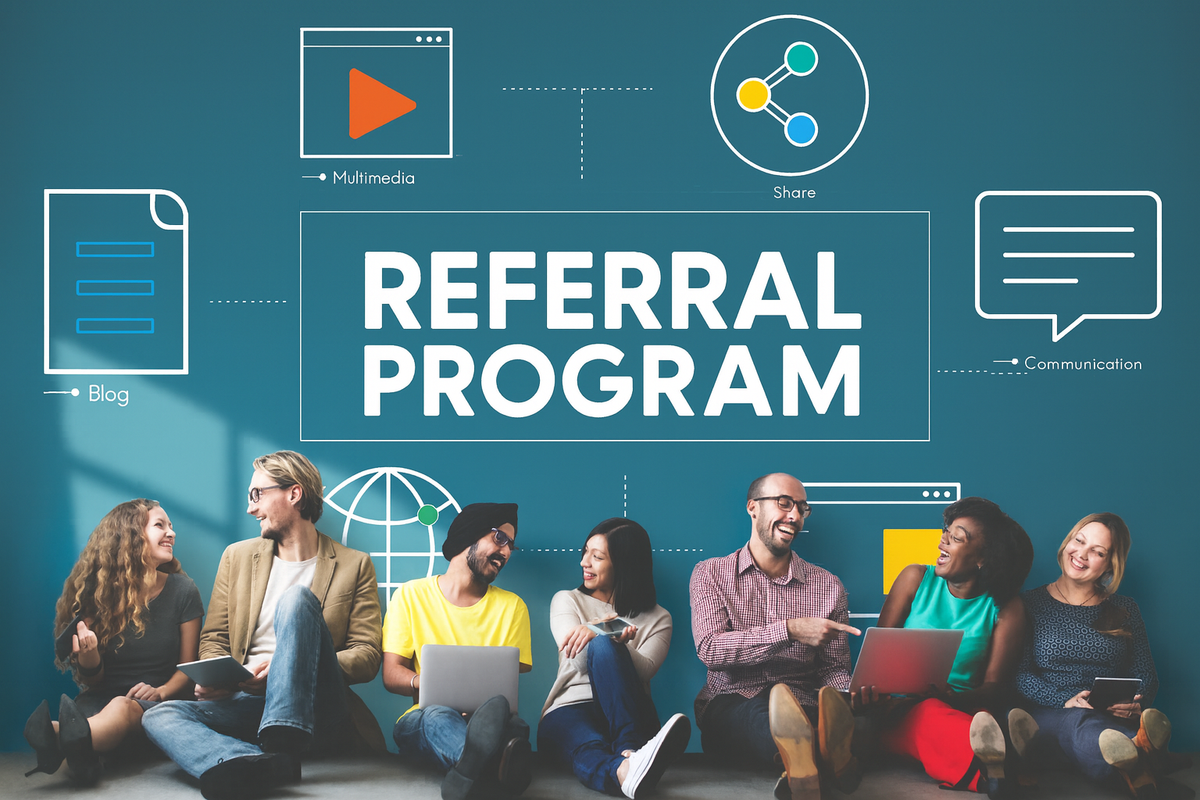Referral Program Benchmarks 2025: What's a Good Conversion Rate?

Quick answer: Most D2C programs in 2025 achieve around 3–5% referral conversion rate (CR). Top performing programs consistently break 8–12% when they remove friction with auto apply links, make rewards cash equivalent, and promote post purchase.
In India, WhatsApp first sharing, UPI payouts, and COD aware guardrails can push you into the top performance band faster.
This guide translates benchmarks into action so you know what "good" looks like and exactly how to beat it with Referrush.
Why Benchmarks Actually Matter for Your Business
Benchmarks keep goals realistic and experiments focused.
If you're lagging, fix visibility and reward fit before chasing volume. If you're already top quartile, scale traffic through placements and reminders instead of micro tweaking copy.
Referral Metrics 101: Track All Four Weekly
Share Rate
% of recent buyers who share their link/code. Healthy range: 5–15% with strong post purchase prompts.
Click Through Rate (CTR)
% of shares that generate at least one visit. Typical: 10–25%. WhatsApp often outperforms email for CTR in India.
Conversion Rate (CR)
% of referred visits that purchase within your window. Median 3–5%. Top programs 8–12% with auto apply links.
Referral Revenue Share
% of total store revenue from referrals. Strong programs reach 10–30% with steady promotion.
Pro tip: Optimize the full chain, not a single metric. A 1 point gain in CR can lift referral revenue 20–30%when share and CTR are stable.
2025 Conversion Rate Benchmarks: What to Expect
Global Performance (all platforms):
Median CR: 3–5%
Top quartile CR: 8–12%
India Performance:
Mobile first + WhatsApp sharing + UPI cashbacks typically shift results upward if COD rules protect margin.
Median CR band: 3.5–6%
Top quartile CR band: 9–13%
Why India can outperform:
1 tap WhatsApp sharing, cash equivalent rewards (UPI/store credit), and high social proof density in communities. This works provided COD/RTO is handled properly (pay on delivery, auto revoke on returns).
Category Performance Bands: Planning Ranges
Food & Beverage / Nutrition: 5–10%
Impulse + gifting behavior. Friend only ₹ discount works well.
Beauty & Personal Care: 4–8%
Tutorial content lifts trust. Friend side rewards beat split rewards.
Apparel & Accessories: 3–7%
Size/returns impact performance. Require delivery before reward payout.
Health & Wellness (non Rx): 4–8%
Subscribe and save boosts CR & repeat purchases.
Electronics & Gadgets: 2.5–6%
Higher AOV category. Reviews and demo videos help conversion.
Home & Décor: 4–9%
Visual UGC + room shots near share CTA perform well.
Subscriptions (boxes, consumables):
Add +1–2 percentage points to the above bands.
Pro tip: If you're below your category's mid band, start with reward relevance and friction reductionbefore changing attribution windows.
Top 7 Conversion Rate Boosters: Fastest Impact First
1. Frictionless redemption
Auto apply the friend discount at landing. Remove code entry completely. (Referrush does this by default.)
2. Friend heavy offers
In India, ₹ specific friend discounts often beat % off and even split rewards. Test ₹120–₹250 bands for AOV ₹800–₹1,500.
3. WhatsApp first sharing
One tap share + pre filled copy. Expect CTR lift vs email/SMS. (Referrush: 1 Tap WhatsApp Sharing.)
4. Post purchase prompts
Modal + order confirmation page + WhatsApp follow ups lift Share Rate 20–40%.
5. Timing & reminders
Send a gentle nudge 7–10 days after delivery. Add a small limited time top up (e.g., +₹50 this week).
6. Social proof near the share CTA
Ratings, "X friends saved ₹___." Keeps CTR high and builds trust.
7. Festival spikes
Pre Diwali/Big Billion Days: temporarily increase friend reward. Revert post sale.
India Specific Protection Rules: Scale Without Killing Margins
COD awareness
Pay advocate rewards only after delivery confirmation. Auto revoke on RTO. Offer a prepaid bonus to shift payment mix.
UPI payouts
Fast and familiar. Drives more shares. Ensure TDS compliant flows with PAN capture. (Referrush supports this natively.)
Return window holds
For high return categories (apparel/beauty), release rewards after return window closes.
Fraud controls
Block self referrals, device/IP duplicates, coupon stacking. (Built into Referrush.)
Language & INR clarity
Use clear ₹ amounts. Bilingual copy if needed. Avoid % only framing for low AOV products.
Essential Tool Stack: Referrush First Approach
Referrush Core
One tap WhatsApp sharing, auto apply links, anti fraud, COD aware payout rules, UPI payouts (TDS ready), A/B testing, comprehensive dashboards.
Your ESP/CRM
Automate post purchase and reminder nudges with referral deep links.
Your BI/Sheets
Build a weekly scorecard: Share Rate, CTR, CR, AOV, CR by device/payment, revenue share, CPA, GM ROAS, pending vs paid rewards.
Pro tip: Keep tools simple. Most uplift comes from offer fit + placements + payout rules, not from adding more apps.
Frequently Asked Questions
What counts as a conversion?
A referred visitor who purchases within your attribution window (start with 7–14 days. Confirm vs time to convert).
Is 5% CR "good"?
It's above the global median. Aim for 8%+ with friction free links and friend heavy ₹ discounts.
Do subscriptions convert higher?
Usually +1–2 percentage points. Predictable value builds trust with referred customers.
Cash vs discount rewards?
Cash equivalent (UPI/store credit) and ₹ specific friend discounts typically outperform percentage based rewards in India.
How long to see impact?
Most brands see measurable lift in 4–6 weeks after fixing friction and visibility issues.
Key Takeaways for Success
2025 referral CR: 3–5% typical performance. 8–12% is the top performance band.
In India, WhatsApp + UPI + COD aware rules help you reach the top band faster.
Fix friction first, then tune reward relevance, then scale placements and reminders.
Use Referrush to launch in minutes, protect margins, and track the metrics that matter.



